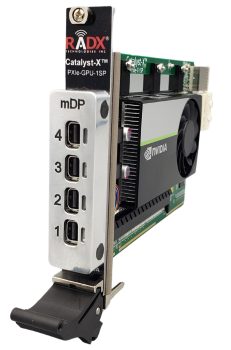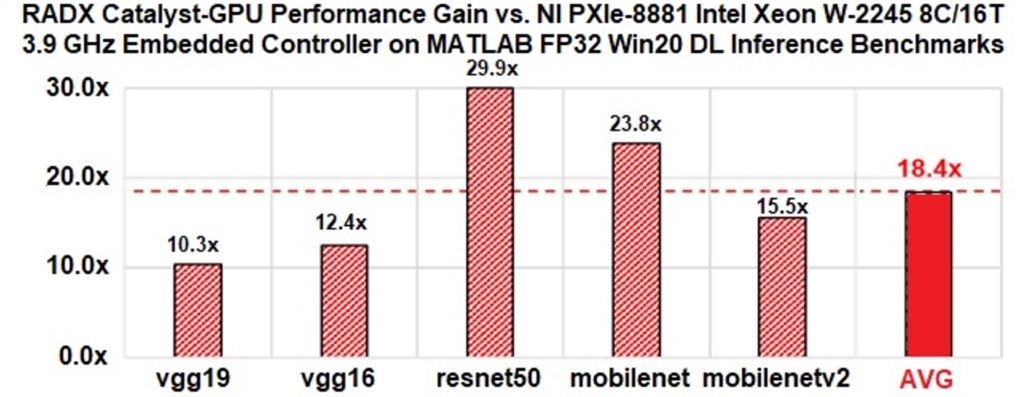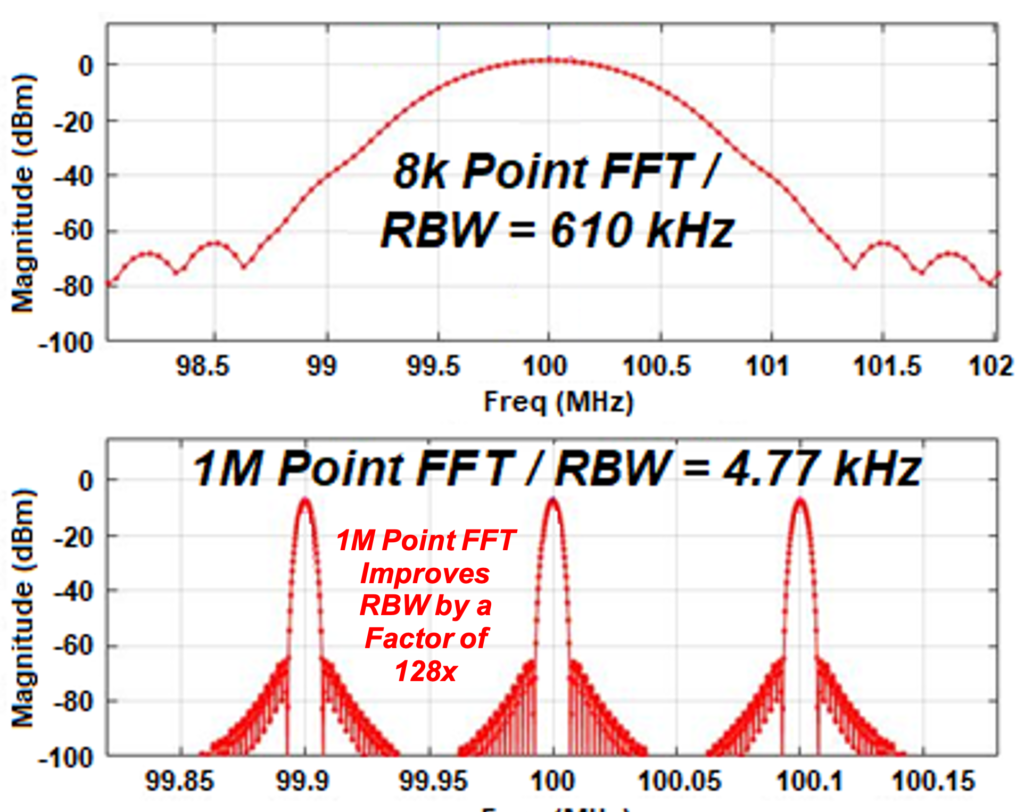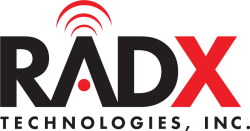Catalyst-GPU
PXI GPU | PXIe GPU | CPCI GPU | CPCIe GPU
Catalyst-GPUs are the first COTS products that bring the cost-effective, easy-to-program, high-performance compute acceleration and advanced graphics capabilities of NVIDIA® Quadro® T600 and T1000 GPUs to the PXIe/CPCIe platform – the fastest growing platform for Modular Test & Measurement (T&M) and Electronic Warfare (EW) applications.
With comprehensive support for MATLAB™, Python, and C/C++, combined with support for virtually all popular computing frameworks, Catalyst-GPUs are easy-to-program for both Windows and Linux operating environments. Catalyst-GPUs feature multi-teraflop (TFLOP) level performance, which is ideal for accelerating Signal Processing applications. In addition, Catalyst-GPUs are ideal for Machine Learning (ML) and Deep Learning (DL) applications, which are becoming increasingly important for AI-based signal classification and geolocation, semiconductor and PCB testing, failure prediction, failure analysis, and other important missions.

Unmatched Performance – Where Data is Acquired
The Catalyst-GPU T1000 model supports up to 2.5 FP32 TFLOPs. Until now, this level of compute acceleration has not been available in PXIe/CPCIe systems. With Catalyst-GPUs, users can now conduct fast and accurate analysis of acquired data directly in the PXIe/CPCIe systems where the data is acquired.
For example, in an NI PXIe-1092 Chassis with an NI PXIe-8881 Embedded Controller (Intel Xeon W-2245 8C/16T 3.9 GHz) running Windows 10 and MATLAB, the Catalyst-GPU T1000 delivers an average performance gain of 7.1x over the Embedded Controller on FP32 FFTs ranging from 1k to 32M samples in length. Under Python, the Catalyst-GPU T1000 delivers an average performance gain of 19.2x.

On 1k to 32M Sample Length FP32 FFTs, RADX Catalyst-GPU T1000 Delivers an Average Performance Gain of 7.1x Under MATLAB and 19.2x Under Python over NI PXIe-8881 Xeon W-2245 Embedded Controllers
On ML and DL AI Applications, the performance gains achievable by Catalyst-GPUs are also quite substantial. On the MATLAB FP32 Deep Learning Inference Benchmarks, the Catalyst-GPU T1000 delivers an average 18.4x performance gain over an Intel Xeon W-2245 8C/16T 3.9 GHz PXIe Embedded Controller.

On MATLAB FP32 DL Inference Benchmarks, RADX Catalyst-GPU T1000 Delivers an Average Performance Gain of 18.4x over NI PXIe-8881 Xeon W-2245 Embedded Controllers
Improved Accuracy and RBW for Enhanced LPI Signal Processing
For signal processing applications, Catalyst-GPU’s support for arbitrary length FFT, PSD, Correlation, and other DSP algorithms. This feature enables accuracy and Resolution Bandwidths (RBWs) that are not practicable in non-GPU based systems. For example, in most FPGAs, the longest practical lengths for FFTs are typically 8k points (samples).
However, in Catalyst-GPUs, 1M point and longer FFTs are practical, and, because of the GPU’s TFLOP performance capabilities, 1M FFTs may be executed in real-time or near-real-time, depending on the application. With longer FFTs, a signal’s true spectral composition becomes more apparent and actionable, and Low Probability of Intercept (LPI) signals become readily detectable and characterizable.

Catalyst-GPU’s Arbitrary Length DSP Functions Improves RBW and Accuracy for LPI Signal Detection, Analysis & Classification
Easy-to-Program via MATLAB, Python and C/C++
One of the most important aspects of Catalyst-GPUs is their ease-of-programming, which stems from their underlying NVIDIA GPUs that support programming via MATLAB™, Python and C/C++, which enables compute acceleration available via NVIDIA CUDA® and OpenCL®. This ease-of-programming has resulted in NVIDIA GPUs becoming the most popular compute accelerators in the world today – with literally millions of engineers, application developers and computer scientists using NVIDIA GPUs to accelerate their applications. Catalyst-GPUs support both Windows and Linux operating environments. In addition, Catalyst-GPUs support popular AI and other frameworks, including MATLAB™, TensorFlow, PyTorch, RAPIDS AI and RAPIDS cuSignal, to name a few.
About Catalyst-GPUs
Based on RADX’ patent-pending Catalyst-X™ design, Catalyst-GPU models available today include NVIDIA Quadro T600 and T1000 GPUs; and RADX plans to offer Tech Insertion options in the future, based on COTS GPU availability. Catalyst-GPUs support PCIe Gen 3 x8 interfaces for optimal performance and 4 x miniDP outputs for multi-monitor applications with resolutions up to 4k. The Catalyst-GPU T600 supports 4GB of GDDR6 memory, up to 1.7 FP32 TFLOPs and a Total Graphics Power (TGP) of 38W – suitable for operation in all NI and 3rd-party PXIe chassis. The Catalyst-GPU T1000 supports 8GB of GDDR6 memory, up to 2.5 FP32 TFLOPs and a TGP of 50W, which is optimized for deployment in NI PXIe-1092 and NI PXIe-1095 Chassis, both of which support 58W/Slot or 82W/Slot and PCIe G3 x8 interfaces, which are ideal for optimum GPU performance.
